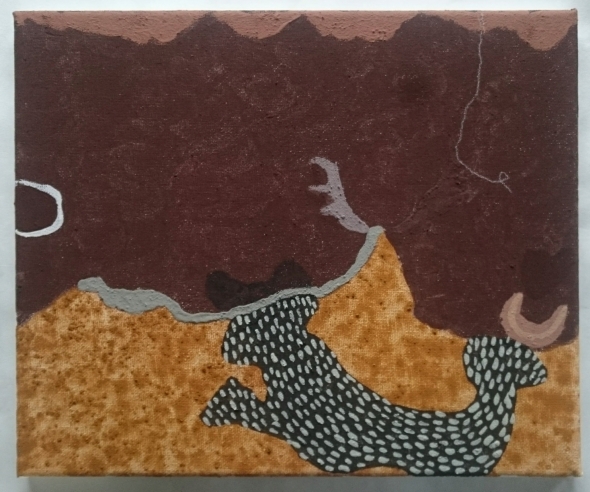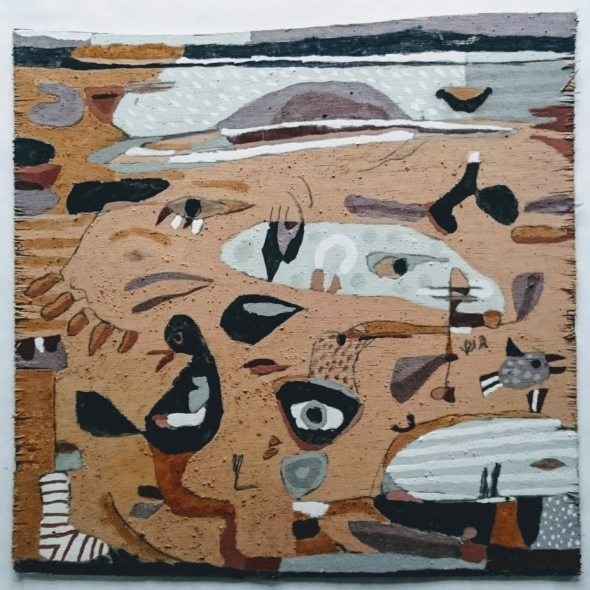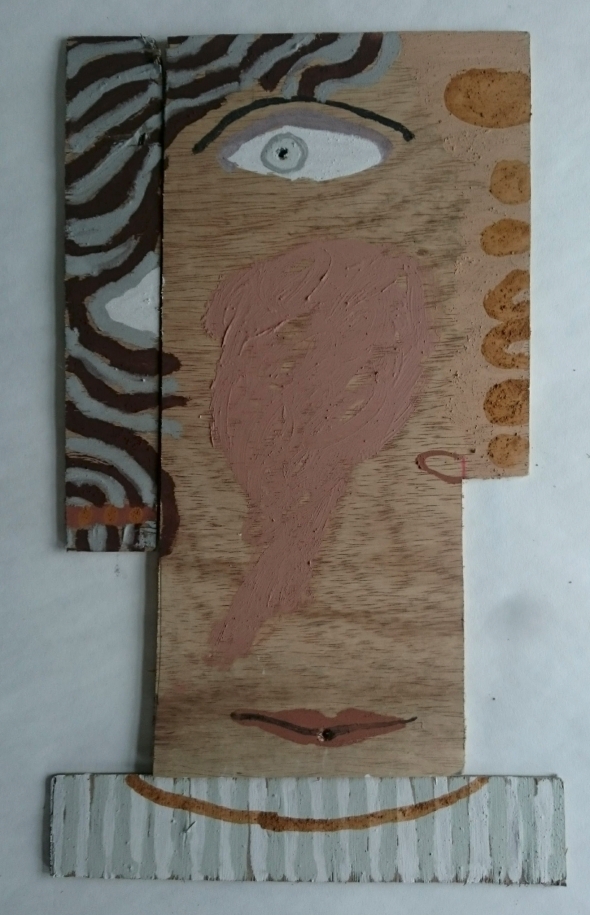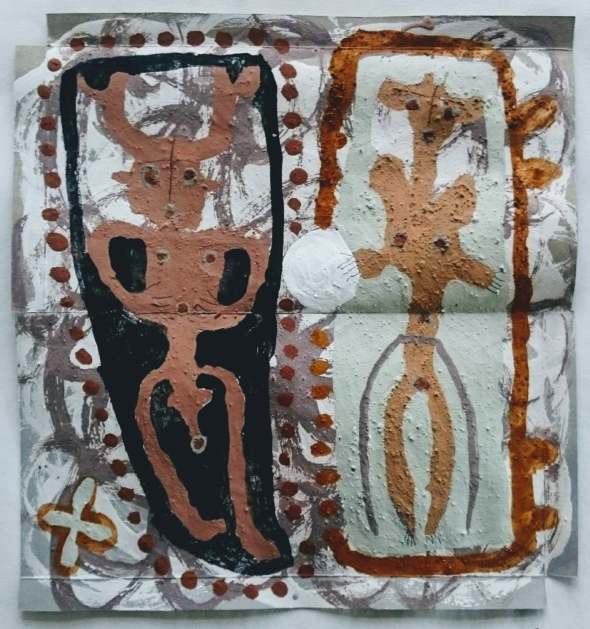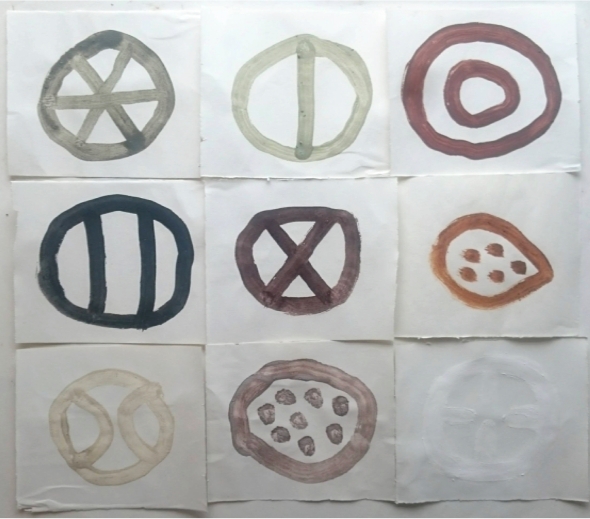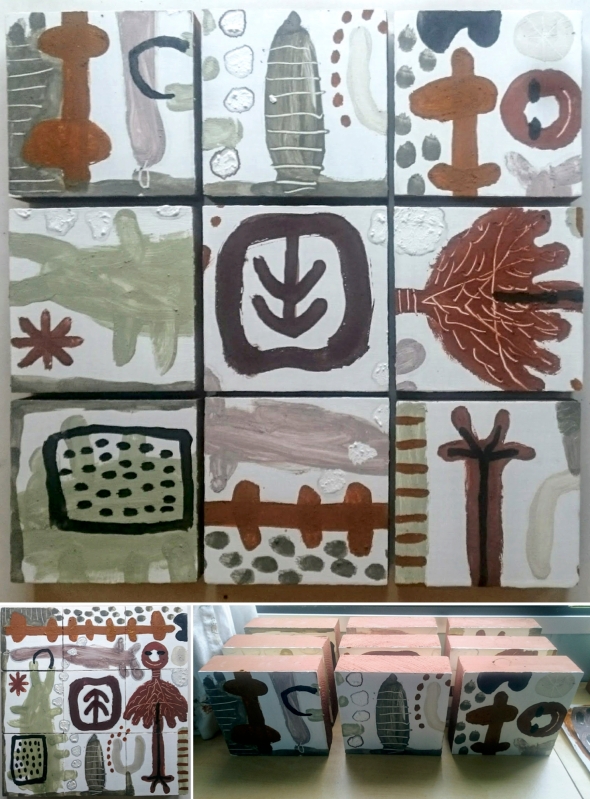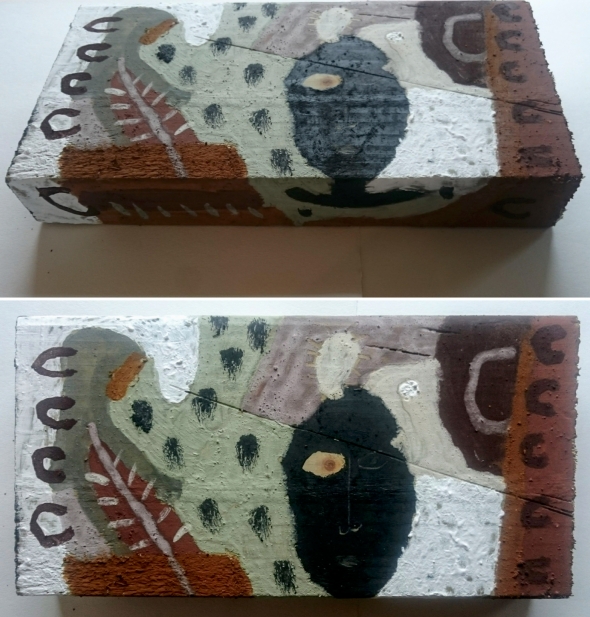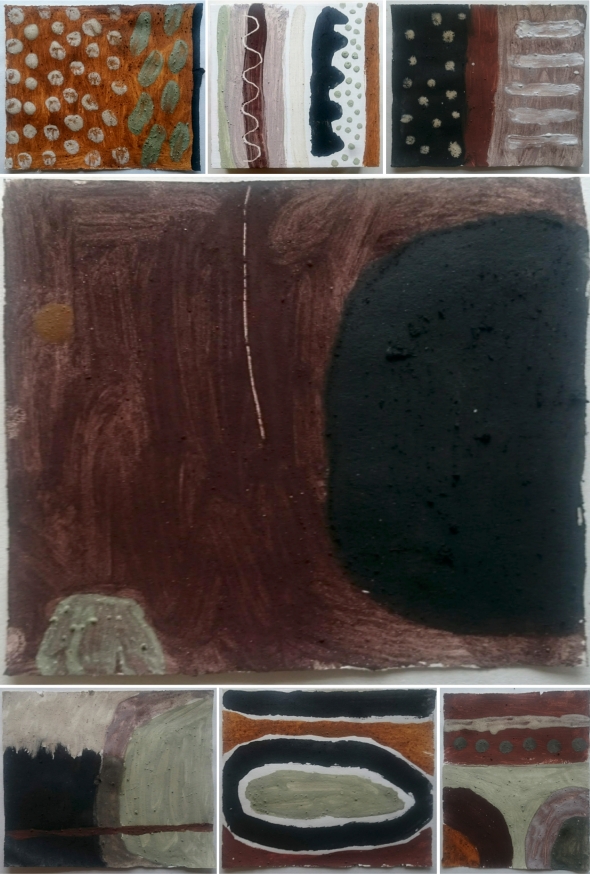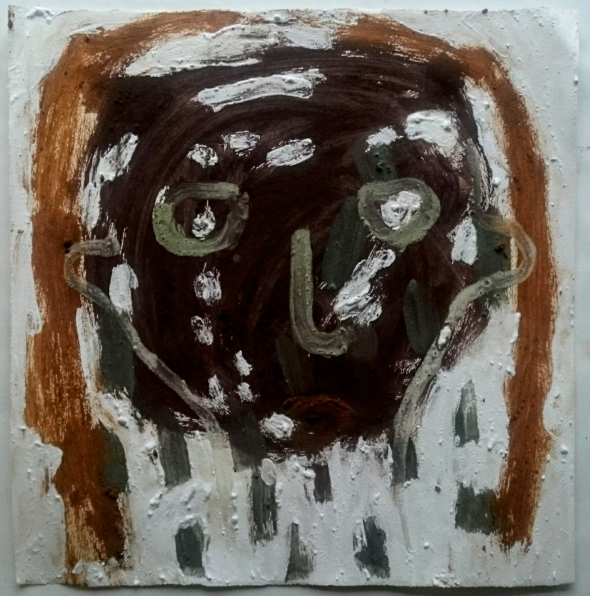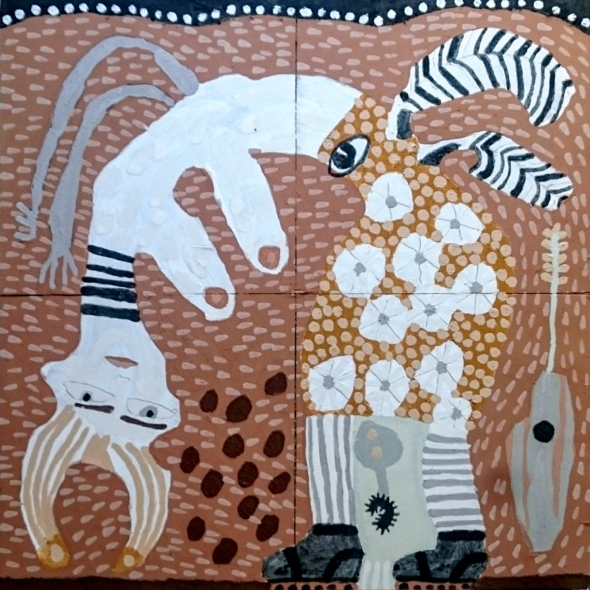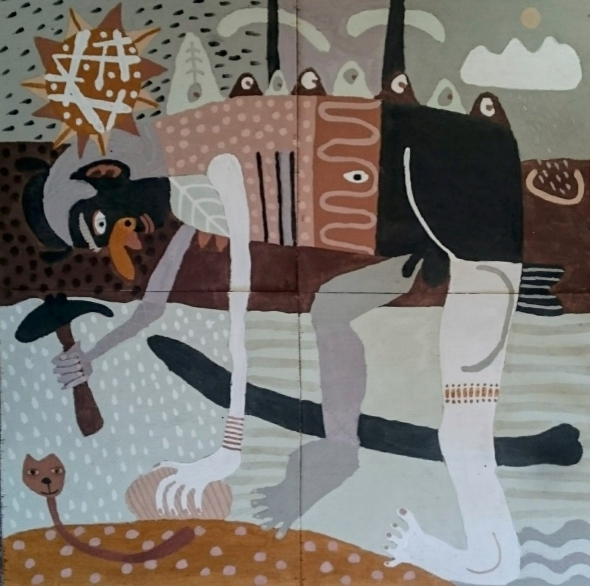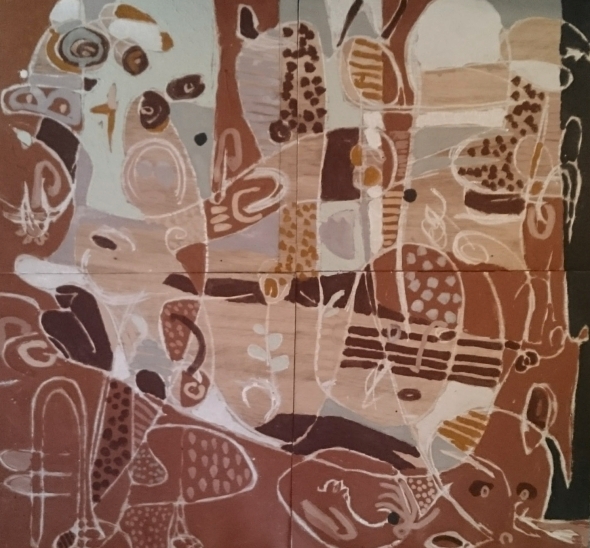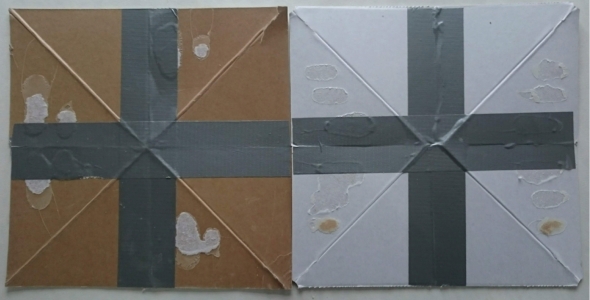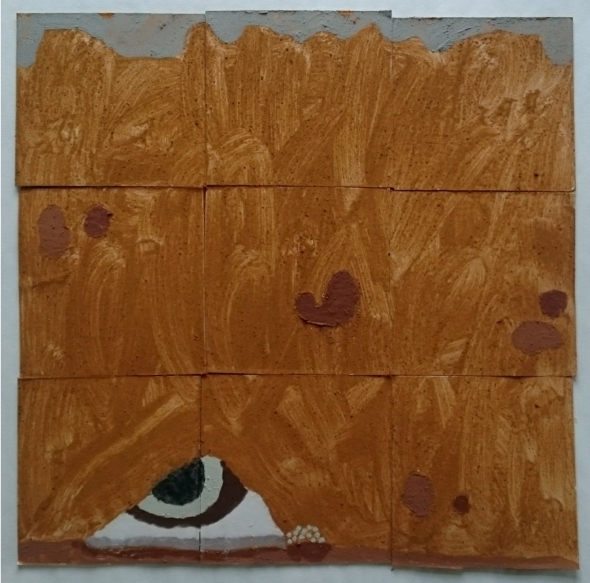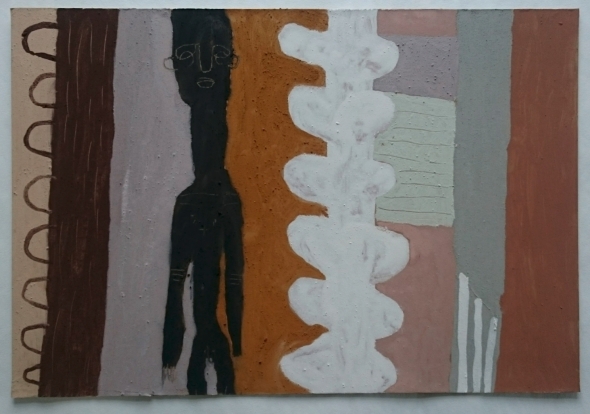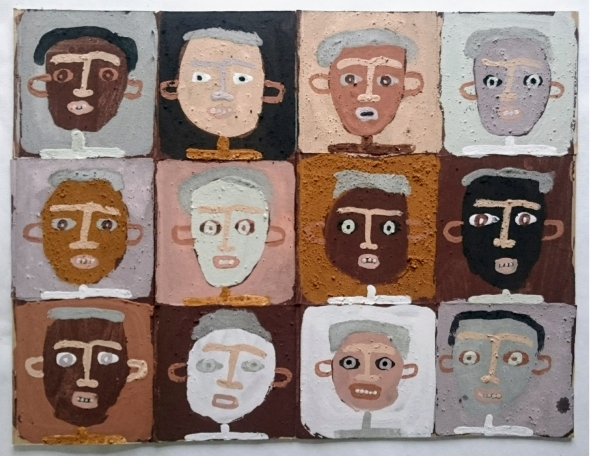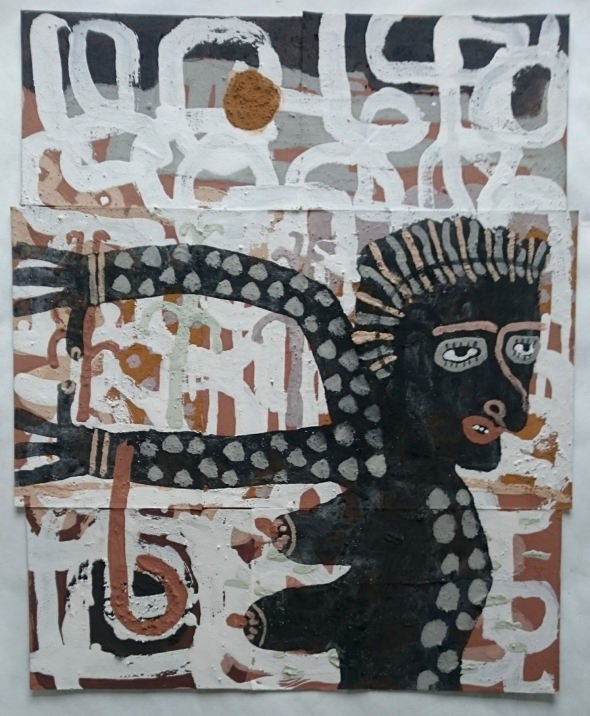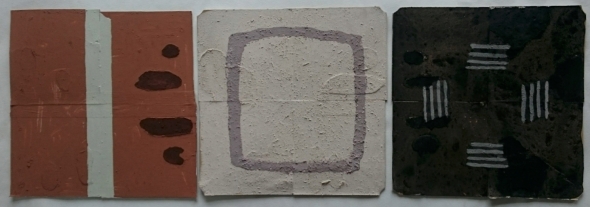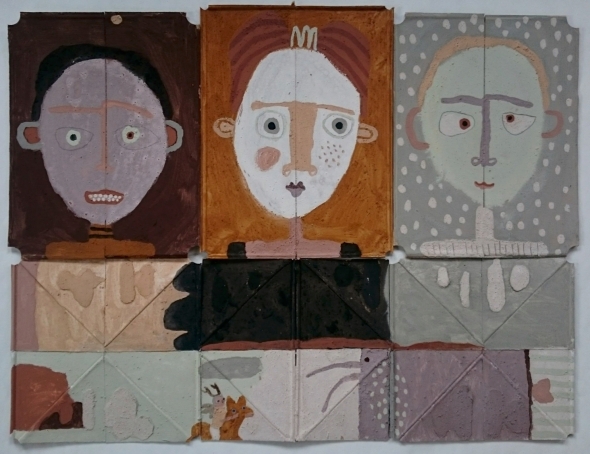on being grounded…
Posted: September 10, 2019 Filed under: activ8, the ash tree | Tags: Arte Povera, ecopsychology, Feeling, Meditation, poetry, Prayer, Ritual, Visual arts Leave a comment  Arrrrgh, Let me OUT!! (pen on envelope on human head) © p ward 2019
Arrrrgh, Let me OUT!! (pen on envelope on human head) © p ward 2019
there are some of us
who are accused
of being ‘grounded’:
perceiving the world and our actions
through a balanced, responsible and rational lens
rooted in practicality and common sense.
but then some of us have also been ‘grounded’ as punishment,
our freedom curtailed by a parent or guardian
for actions that often do not lie within preconceived moral boundaries,
boundaries of balance, responsibility and rationality,
often rooted in practicality and common sense
often according to Nature and her Laws
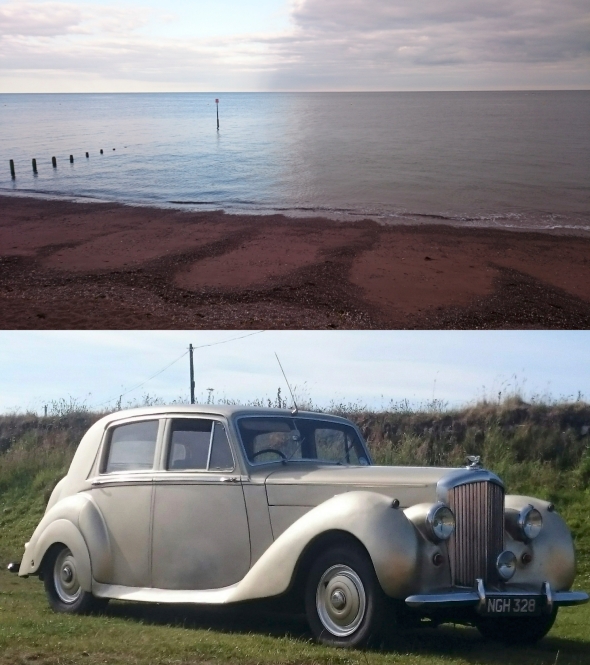 Teignmouth, South Devon; Big Silver Bentley, Gurnard’s Head, Cornwall © p ward 2019
Teignmouth, South Devon; Big Silver Bentley, Gurnard’s Head, Cornwall © p ward 2019
but how we wish to fly
to shed the shackles of good sense
for other and ourselves
in search of learning, perspective and sensual joy
defining new boundaries beyond our knowledge
or otherwise fleeting original experience
before our time is out
in magic
we see
in magic
we live
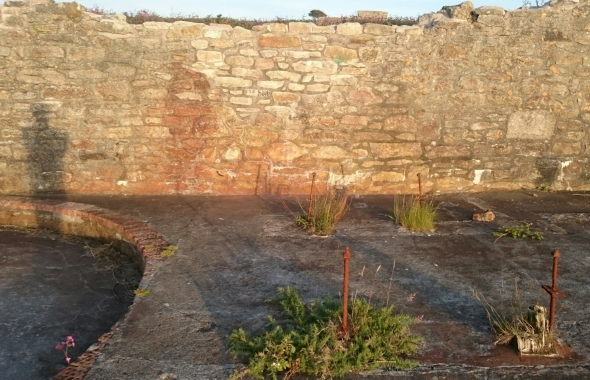 Trease Mine, Boscaswell, Cornwall © p ward 2019
Trease Mine, Boscaswell, Cornwall © p ward 2019
© P Ward 2019
and yet…
Posted: September 10, 2019 Filed under: activ8, the ash tree | Tags: art and science, Arte Povera, climate crisis, climate emergency, eco art, ecopsychology, Feeling, Interdisciplinarity, Meditation, poetry, Prayer Leave a commentthis climate emergency, part 2
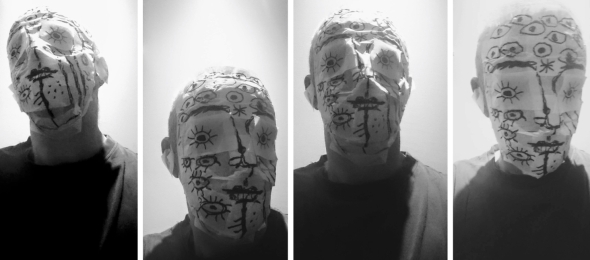 drawing on my face 4: seeing (masking tape and marker pen on human head) © p ward 2019
drawing on my face 4: seeing (masking tape and marker pen on human head) © p ward 2019
and yet,
the sun and moon still rise and fall
birds sing
grass grows
everything is somehow in place.
despite imagery evocative of an abrupt demise,
despite rising popular opinion and attendant fearful frenzy,
despite the corroboration of a high percentage of scientific peers,
despite indicative physical, ideological and pecuniary global suffering and conflict,
despite a lifelong personal acknowledgement of our continuing abuse of Nature…
I do not sense
I do not feel
the end.
I cannot sense
I cannot feel
the end.
I do not, cannot
and will not accept
the end.
so what of instinct and intuition (the antithesis of science)?
what of individual response?
what of collective consciousness?
what of the uninformed, the common man?
are we, en masse, running from the ensuing fire?
and anyway, where can we run in this apparent global catastrophe?
if I do not feel it,
if I stand aside the mindful stampede,
am I simply burying my head in the sand
in denial of empirical objectivity,
in fear of the inevitable?
or is it that
I do not know within my power what more I may do?
as I stand on this excellent brink of oblivion, this ending of sorts,
with the knowledge, wisdom and capability of all I have before
there is opportunity
there is technology
and there is love.
I must either believe in the magic and wonder of the human spirit within Nature or not
like every day
like any day
I breath
I choose
I act according to (my) Nature…
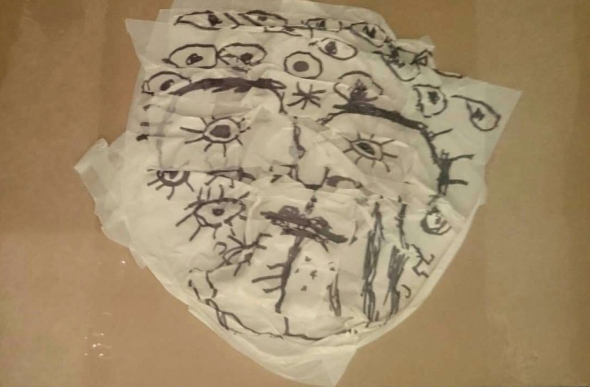 drawing on my face 4: seeing (masking tape and marker pen on human head) © p ward 2019
drawing on my face 4: seeing (masking tape and marker pen on human head) © p ward 2019
© P Ward 2019
it is like being told I am dying
Posted: August 24, 2019 Filed under: activ8, the ash tree | Tags: Arte Povera, arts research, climate crisis, climate emergency, eco art, ecopsychology, extinction rebellion, Feeling, Meditation, poetry, Prayer 3 Commentsthis climate emergency, part 1
in a climate of overwhelming societal and professional expectation as an artist and an earth being i have struggled to know how to meaningfully and effectively respond directly to this ever-present issue. here are some of my thoughts and feelings expressed through words and an ongoing visual project…
it is like being told I am dying
that I am in the final stages of a terminal disease
after a long chronic illness or complaint
and that if I live the way I always should have,
the way I always have,
the way I have always known I should,
the way I have always said we should,
then maybe, maybe, maybe
I will not die.
it is like being told I am dying
but that everyone else and every other life is dying too.
that we are all dying and that it is all our own fault,
well, maybe not allour own fault
but somebody’s fault, some system’s fault, some thought-form’s fault,
that this beauty, this wonder that we experience on a daily basis
will no longer exist (for us)
because of us
it is like being told that everything and everybody that we love
is going to die, to not be.
it is a just like dying,
my experience of dying and death
in normallife –
we are all dying.
we are all going to die.
we are all living with the knowledge that we are all going to die,
that everything and everybody that we love is going to die
and that we shall experience suffering (and joy)
together.
it is still a shock when it comes.
when the reality of our imminent passing becomes apparent.
the utter enormity of it
combined with our inherent inability to conceive of such.
and who are we to talk to
other than those others similarly afflicted and condemned,
others who love and feel and care,
those who are afraid of what might become?
so
how shall we live?
how shall I live?
how shall I end this final sentence?
 drawing on my face – smile (masking tape and marker pen on human head) © p ward 2019
drawing on my face – smile (masking tape and marker pen on human head) © p ward 2019
© P Ward 2019
no light no colour no more
Posted: February 25, 2019 Filed under: eARTh | Tags: Aesthetics, art and science, Arte Povera, Arts, arts research, Cornwall, earth pigments, eco art, ecopsychology, Environmental art, Feeling, indigenous culture, painting, Pigment, Visual arts 2 Commentsfurther material responses to existential emergence, crisis and change
I was reminded recently, while gazing fleetingly into the shimmering turquoise green blue ocean here in West Cornwall, of my early art training based in the classical understanding of colour. colour as light. a systematic mixing together of homogenous materials to represent the colours that we observe in Nature from a set of ‘primaries’: reds, blues and yellows. no black. white in moderation. of hue.
 iron board, Praa Sands, Cornwall (Cornish earth pigments on rock) © p ward 2019
iron board, Praa Sands, Cornwall (Cornish earth pigments on rock) © p ward 2019
our perception of colour, of light and shade, and hence of depth, size, form and materiality, is sometimes explained as the processing and communication of visual information created by the reflection, refraction and absorption of light in relation to materials. working with earth pigments has revealed ‘colour’ as more than just a visual ‘scientific’ process of perception. it is more a holistic appreciation of material presence which encompasses not just colour but texture, smell and a provenance of time and place, of formation and decay, of ecology, history and Nature itself.
we may often associate earth colours with a range of browns, reds and yellows. with this latest set of paintings I have been enjoying a more subtle selection of greys, greens, mauves and whites that I have found, gathered and mixed near my home.
I could say that the stories they tell are unique expressions of their own experience that I have been privileged to bring into contemporary form, but maybe that is for you to decide…
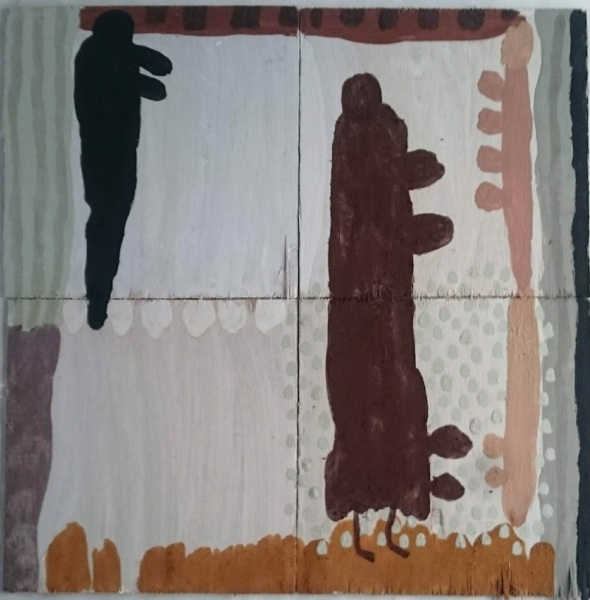 aspects of landscape and love – today it snowed (Cornish earth pigments on board; 51x51cm) © p ward 2019
aspects of landscape and love – today it snowed (Cornish earth pigments on board; 51x51cm) © p ward 2019
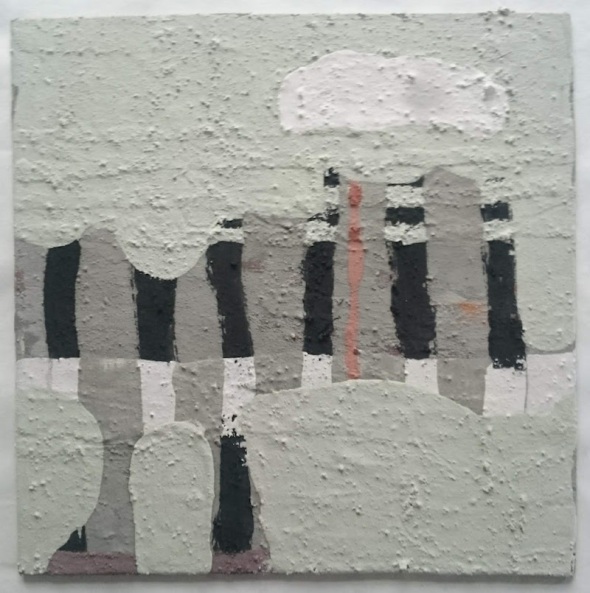 the beautiful things that people say when they are together (Cornish earth pigments on board; 25x25cm) © p ward 2019
the beautiful things that people say when they are together (Cornish earth pigments on board; 25x25cm) © p ward 2019
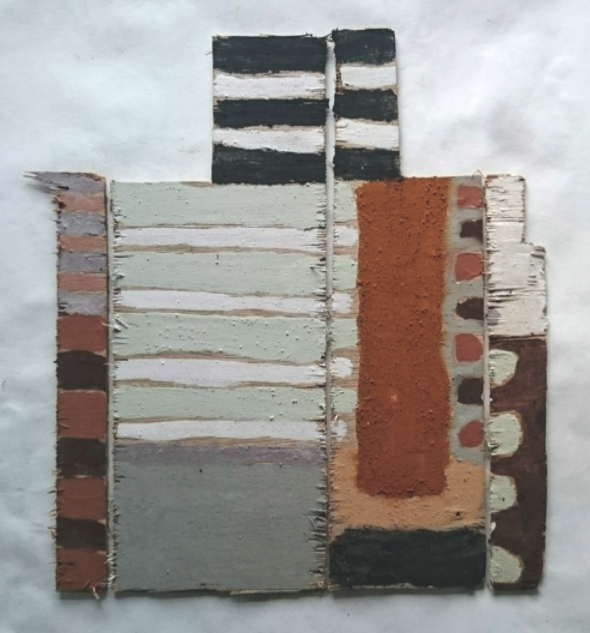 facing up to facing up to (Cornish earth pigments on board; 31x33cm) © p ward 2019
facing up to facing up to (Cornish earth pigments on board; 31x33cm) © p ward 2019
 rearranging the furniture (Cornish earth pigments on board; 35x35cm) © p ward 2019
rearranging the furniture (Cornish earth pigments on board; 35x35cm) © p ward 2019
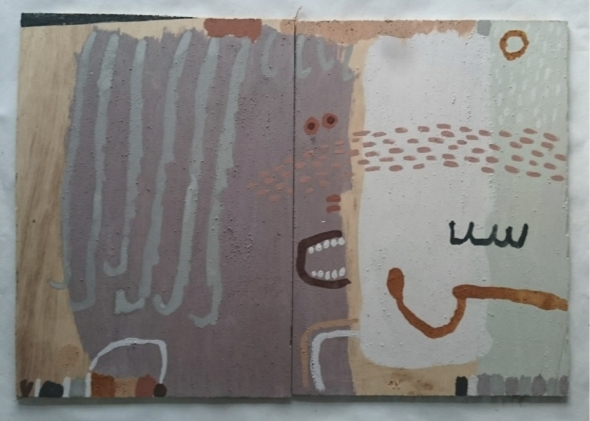 like chopping onions in a northwesterly gale (Cornish earth pigments on board; 56x38cm) © p ward 2019
like chopping onions in a northwesterly gale (Cornish earth pigments on board; 56x38cm) © p ward 2019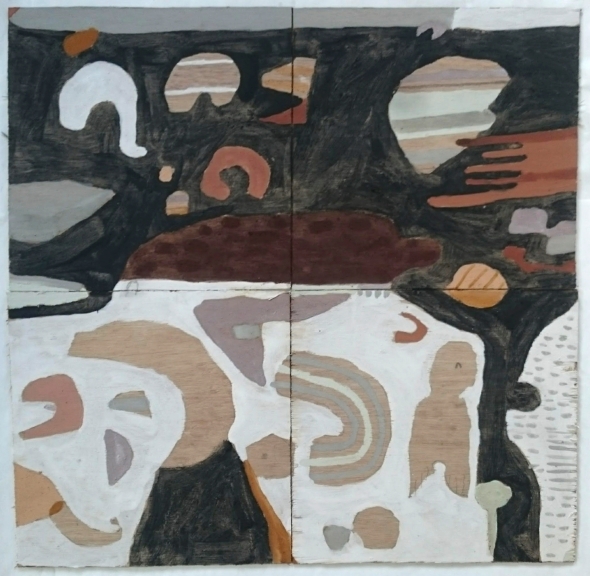 stones that stand in fields with swans and cows and geese: penwith (Cornish earth pigments on board; 70x68cm) © p ward 2019
stones that stand in fields with swans and cows and geese: penwith (Cornish earth pigments on board; 70x68cm) © p ward 2019
 simple communication here (Cornish earth pigments on card; 61x51cm) © p ward 2019
simple communication here (Cornish earth pigments on card; 61x51cm) © p ward 2019
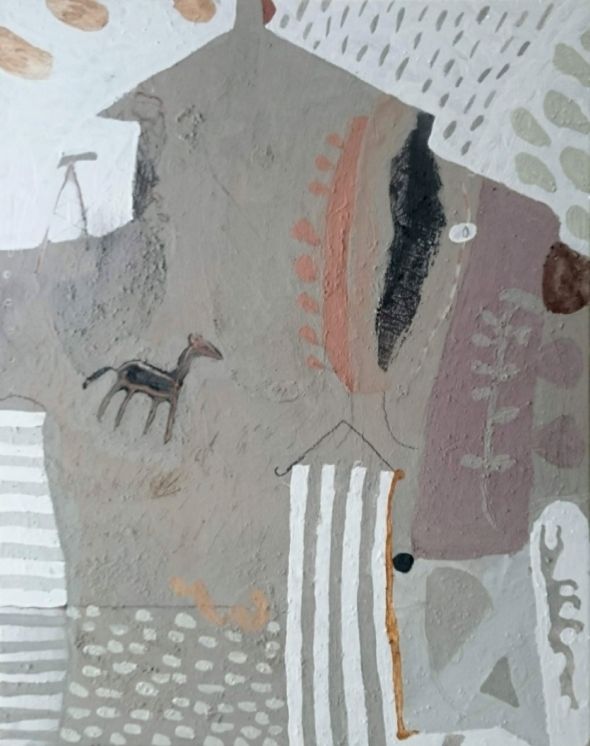 house of power (Cornish earth pigments on canvas; 40x50cm) © p ward 2019
house of power (Cornish earth pigments on canvas; 40x50cm) © p ward 2019
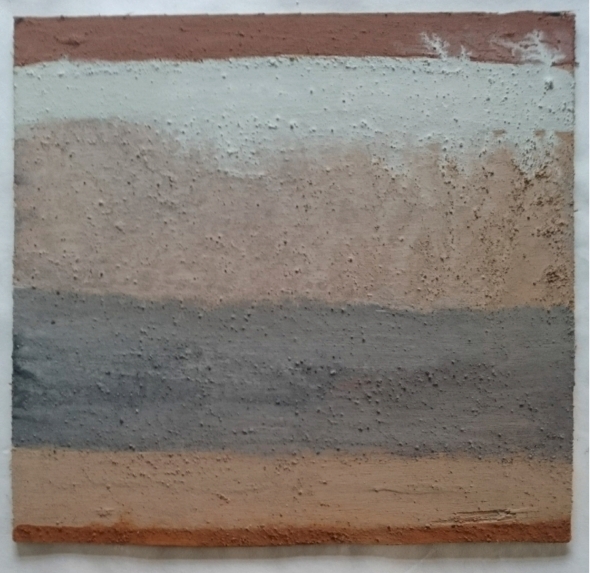 nondescript (Cornish earth pigments on board; 27x26cm) © p ward 2019
nondescript (Cornish earth pigments on board; 27x26cm) © p ward 2019
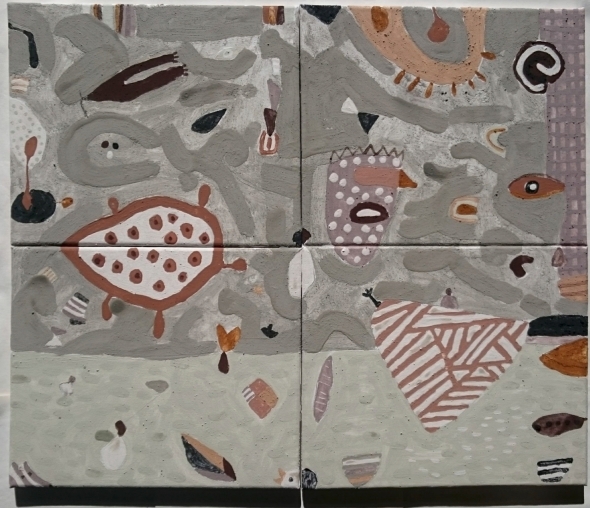 turning a new leaf with foxes on my mind (Cornish earth pigments on canvas; 61x51cm) © p ward 2019
turning a new leaf with foxes on my mind (Cornish earth pigments on canvas; 61x51cm) © p ward 2019
© P Ward 2019
painting within limits
Posted: January 26, 2019 Filed under: eARTh | Tags: Aesthetics, Arte Povera, Arts, arts research, Cornwall, Earth, earth pigments, eco art, ecopsychology, Environmental art, indigenous culture, painting, Pigment, Visual arts 1 Commentnew paintings from Cornwall – early 2019
For many years I have exclusively used colours from the earth in my paintings, gathering and processing all the pigments myself. Each location offers a unique palette and quality of colour to work with as well as a deeper understanding of that place.
To some it may seem as if creativity is being limited. “How can I paint the sky or the trees?” are frequent questions when running workshops. Working with earth pigments has changed the way I work and my understanding of painting in many ways. It has enriched my perception of colour and the ‘material’ of colour. Black is no longer “an absence of light”. For me it allows a specific expression of place orientated, of course, by my own relationship to being there.
The paintings here respond to the nature of earth colours and experiences in West Cornwall…
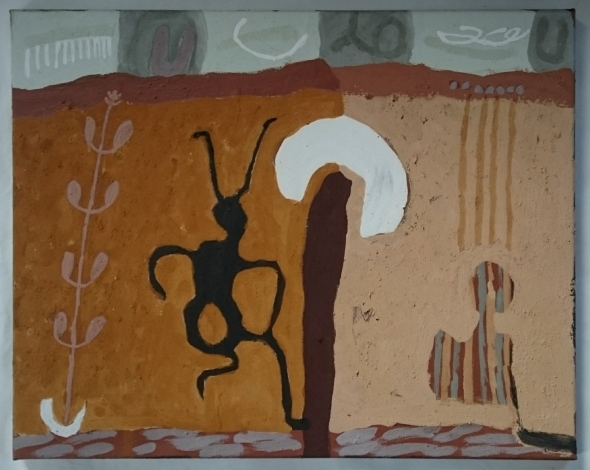 distance what we have become (Cornish earth pigments on canvas; 60x40cm) © p ward 2019
distance what we have become (Cornish earth pigments on canvas; 60x40cm) © p ward 2019
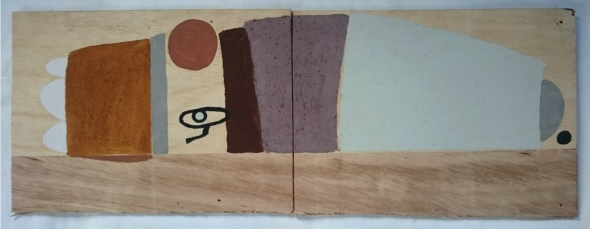 big red wolf moon that I did not see (Cornish earth pigments on board; 76x28cm) © p ward 2019
big red wolf moon that I did not see (Cornish earth pigments on board; 76x28cm) © p ward 2019
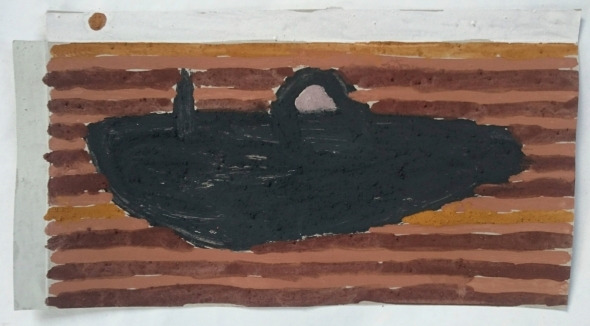 to run aground an island (Cornish earth pigments on card; 27x15cm) © p ward 2019
to run aground an island (Cornish earth pigments on card; 27x15cm) © p ward 2019
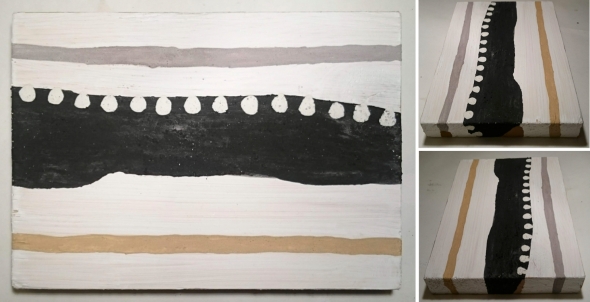 estuary (Cornish earth pigments on wood; 20×14.5x2cm) © p ward 2019
estuary (Cornish earth pigments on wood; 20×14.5x2cm) © p ward 2019
 untitled I, II, III (Cornish earth pigments on board; 25x26cm; 25x28cm; 25x26cm) © p ward 2019
untitled I, II, III (Cornish earth pigments on board; 25x26cm; 25x28cm; 25x26cm) © p ward 2019
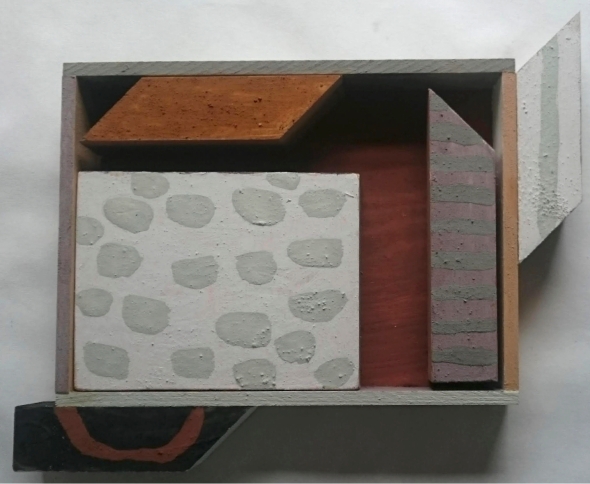 offcuts homestead (Cornish earth pigments on wood; 29x24x3cm) © p ward 2019
offcuts homestead (Cornish earth pigments on wood; 29x24x3cm) © p ward 2019
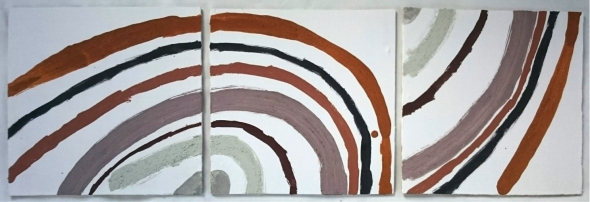 at fault (Cornish earth pigments on board; 80x26cm) © p ward 2019
at fault (Cornish earth pigments on board; 80x26cm) © p ward 2019
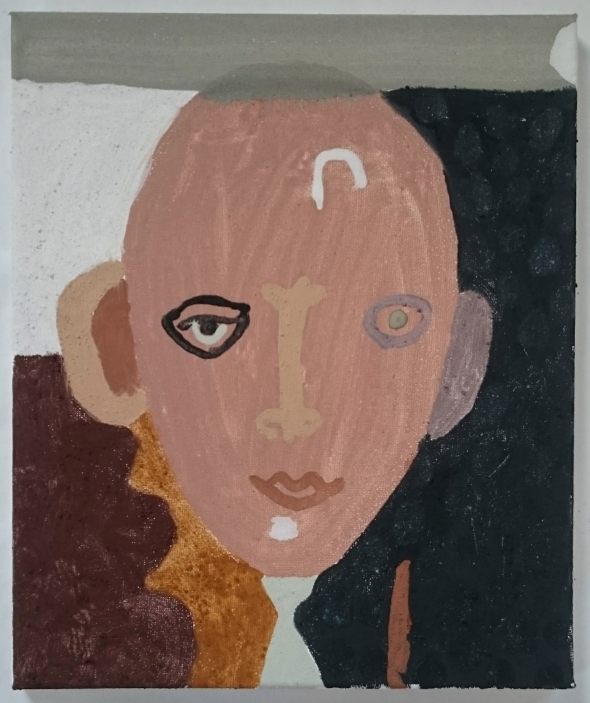 fairy queen (Cornish earth pigments on canvas; 25x30cm) © p ward 2019
fairy queen (Cornish earth pigments on canvas; 25x30cm) © p ward 2019
© P Ward 2019
Painting with Earth – Cornwall: new home, new works
Posted: November 30, 2018 Filed under: eARTh | Tags: Arte Povera, Arts, arts research, Cornwall, earth pigments, eco art, ecopsychology, Environmental art, Feeling, indigenous culture, painting, Pigment, poetry, Visual arts Leave a commentNovember 2018
despite the wind
despite the weather
despite the winter
despite the sense of vulnerability
this raw and new found exposure
despite the twisting and turmoil of our times
despite love
and loss
despite it all
this earth still shines
Before I embark on a new phase of experimentation, combining different binders with the Cornish pigments, I would like to share a few paintings that I have made in my new home – a caravan on a dairy farm in the coastal hills of west Penwith, Cornwall.
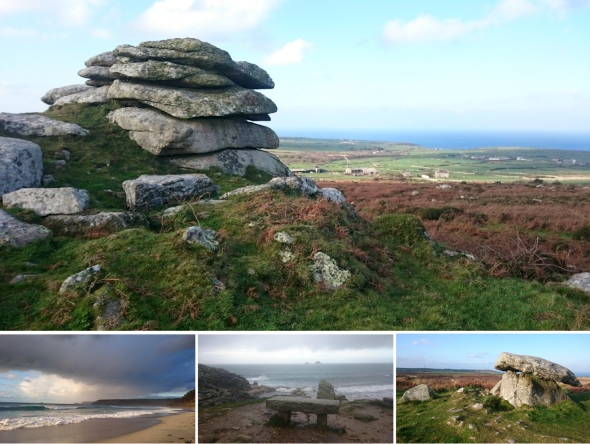 West Penwith, Cornwall – Morvah, Sennen Cove, Cot Valley and Chun Quoit © p ward 2018
West Penwith, Cornwall – Morvah, Sennen Cove, Cot Valley and Chun Quoit © p ward 2018
Here, I am surrounded by the historic land markings of the ancient peoples who populated this extremity of the British Isles. Stone walls, reportedly demarcating some of the oldest working field networks in the world, built 5000 years ago. Iron age hill forts, burial mounds, settlements and wells set in the denuded coastal wasteland of heath and moor. It is at times bleak. After the rain and wind that lashes fresh from the vast Atlantic ocean, the colours of autumn shine. The constantly changing hues of the blue and grey and turquoise sea. Rainbows sitting in our laps. The sky heavy and clear and dark and brooding. Salt water permeating. The animals are exposed by their hunt for food, by the lack of cover afforded by the stripped land. It is a place of spirit and history and life, right now.
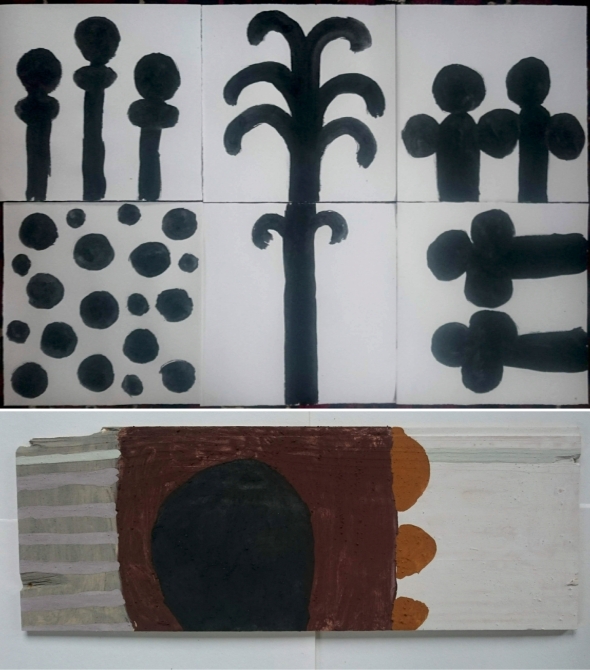 Penwith dream forms (Botallack black on paper); fogou (Cornish earth pigments on wood) © p ward 2018
Penwith dream forms (Botallack black on paper); fogou (Cornish earth pigments on wood) © p ward 2018
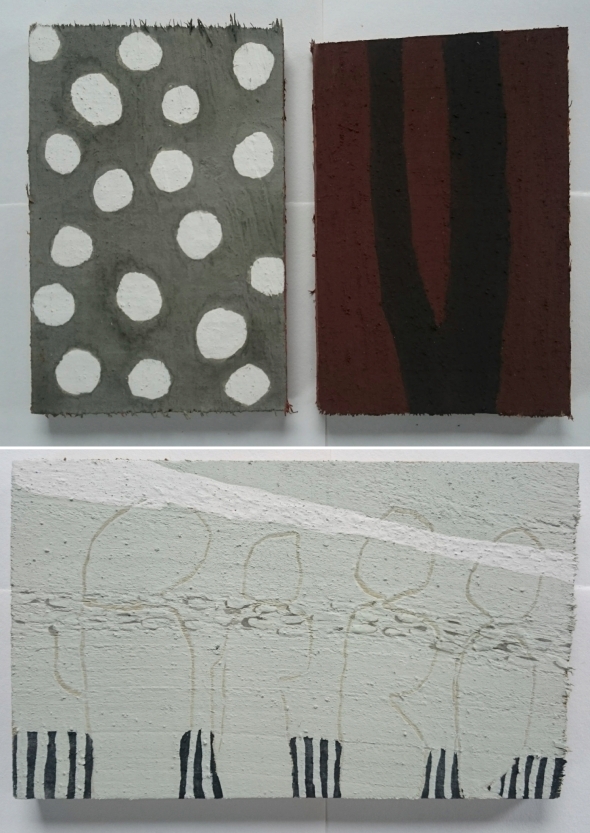 mineral, vegetable; mist (Cornish earth pigments on wood) © p ward 2018
mineral, vegetable; mist (Cornish earth pigments on wood) © p ward 2018
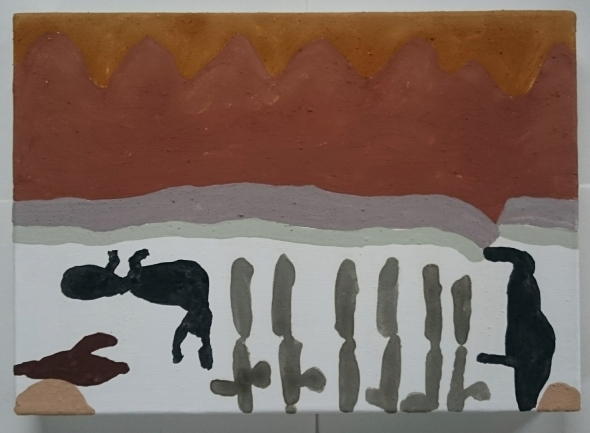 dance on the shore (Cornish earth pigments on canvas) © p ward 2018
dance on the shore (Cornish earth pigments on canvas) © p ward 2018
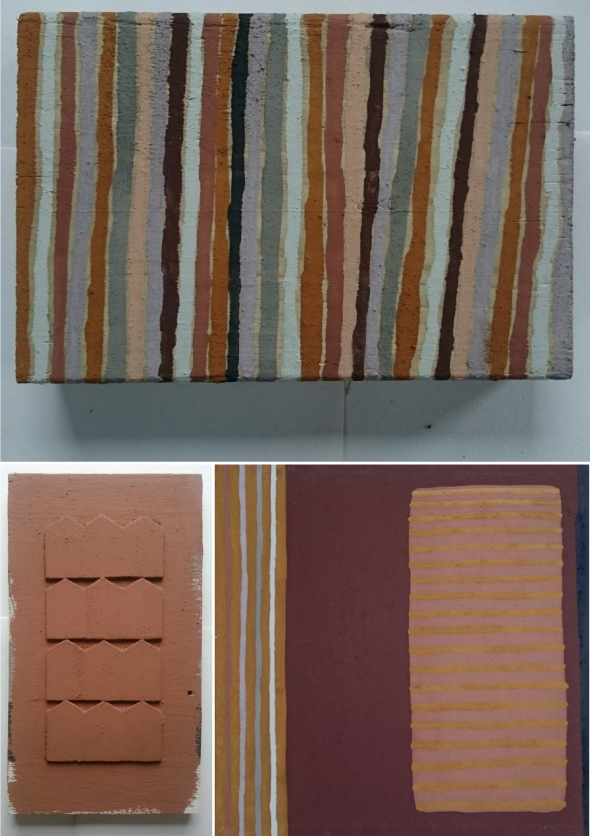 virtually vertical; community (Cornish earth pigments on wood); earth bound (Cornish earth pigments on canvas) © p ward 2018
virtually vertical; community (Cornish earth pigments on wood); earth bound (Cornish earth pigments on canvas) © p ward 2018
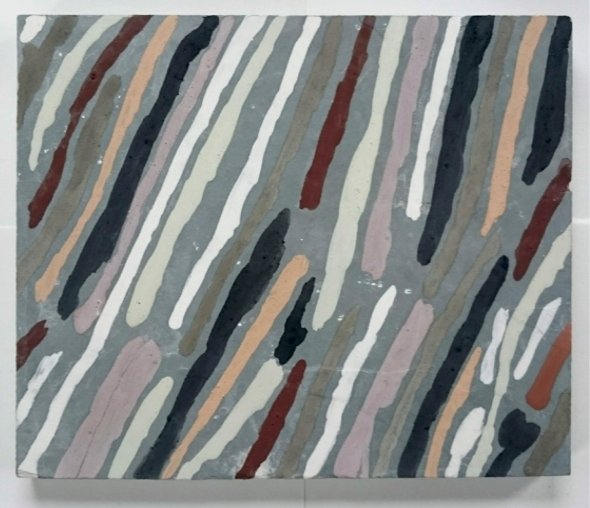 pigment drift (Cornish earth pigments on slate) © p ward 2018
pigment drift (Cornish earth pigments on slate) © p ward 2018
I am slowly learning to listen to the language of the colours here. The earth pigments, their qualities, their sources are unfamiliar. New to me. They are similar in colour to those of North Devon, that I have been using for a long time but very different in other ways. Their formation. Their nature. They have not been part of my own story, until now. The marks and stories they suggest are gradually revealing themselves. Their relationships unfolding. Their dynamic. And despite my attempts at integrity to their provenance and the spirit of this place in which I find myself, it is the freedom of my children’s paintings and drawings that are inspiring me…
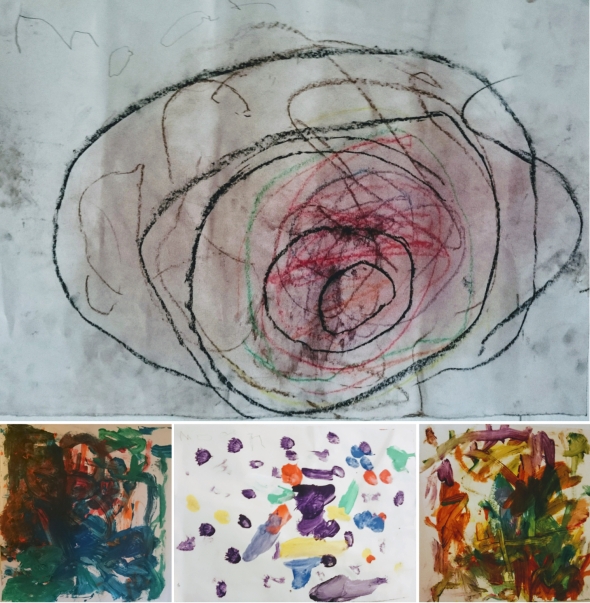 noah, agnes, noah, agnes (pastel and paint on paper) 2018
noah, agnes, noah, agnes (pastel and paint on paper) 2018
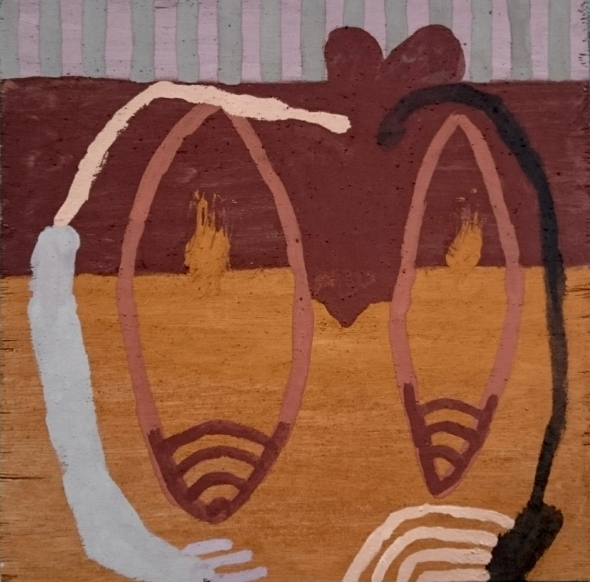 two heads (Cornish earth pigments on wood) © p ward 2018
two heads (Cornish earth pigments on wood) © p ward 2018
 eventual remediation (Cornish earth pigments on wood) © p ward 2018
eventual remediation (Cornish earth pigments on wood) © p ward 2018
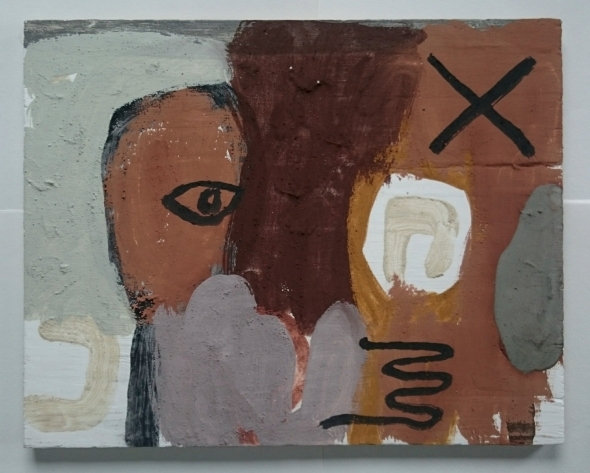 looking for love (Cornish earth pigments on wood) © p ward 2018
looking for love (Cornish earth pigments on wood) © p ward 2018
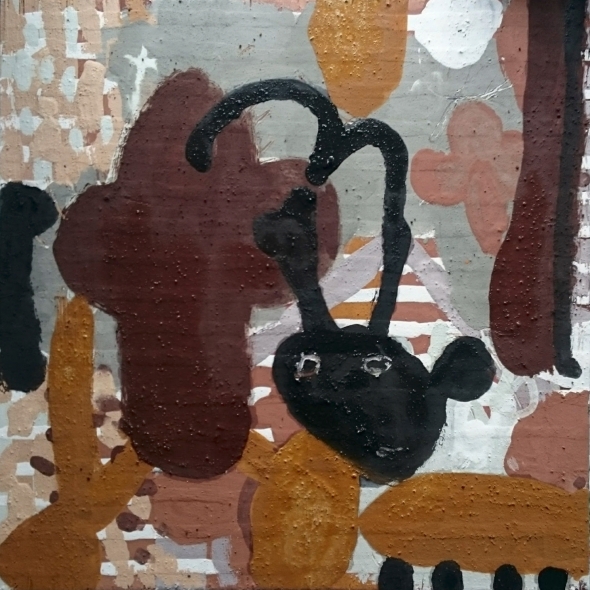 Cornish Folk Tale I (Cornish earth pigments on wood) © p ward 2018
Cornish Folk Tale I (Cornish earth pigments on wood) © p ward 2018
Professionally, I am working on an Arts Council National Lottery Project Fund proposal in association with Geevor Tin Mine to research the creative and educational potential of the pigments. Through recent projects and contact with the staff at the Mine I have started to appreciate and become really excited by the rich historical, geological, chemical and social provenance that the colours carry. After the far-reaching and ongoing success that Painting with Earth – North Devon has brought, let’s hope I will get some real financial support to enable the continuation of this rich seam of work ;-).
© P Ward 2018
7 Cornish Pigments: first findings
Posted: August 31, 2018 Filed under: eARTh, educ8 | Tags: art and science, Arte Povera, arts research, British Art, Cornish Art, Cornish mining, Cornwall, earth pigments, eco art, Ecology, ecopsychology, Environmental art, Interdisciplinarity, Mining 1 CommentTHIS TOXIC(?) BEAUTY
 Cornish Landscape (raw and ground Cornish pigments) © p ward 2018
Cornish Landscape (raw and ground Cornish pigments) © p ward 2018
The 7 colours shown here have been gathered close to historic mining sites in west Cornwall. Some are waste products from tin and copper mining and may contain toxic minerals such as arsenic and cadmium, ironically both used historically in paint and pigment production. Despite being found alongside public rights of way until sufficient mineral analysis has been made of the samples I am unable to share them with the public.
However, I am comfortable enough to start using them myself (with care). Inspired by the milling process used to extract tin I have started to mix the raw materials with water before filtering with a fine sieve. This minimizes the grinding process and hence the possible inhalation of dust. So far I have only used PVA glue as a binder but enjoyed the difference in colour, provenance and nature of the pigments compared to the North Devon pigments I am more familiar with. As such the imagery has started to take on its own character relevant to the materials, the geographical space and my personal experience of Penwith and west Cornwall. I am currently working with Geevor Tin Mine Museum to develop educational workshops using the pigments. The mine itself and attendant museum is utterly fascinating allowing me to better understand the differences between pigments from natural landforms and those extracted from deep underground. In due time I will be able to better share my findings but for the time being here are some of my first paintings made using the wonderful, beautiful but maybe a little toxic Cornish pigments.
As yet the paintings are relatively small (up to 60x60cm) but I look forward to taking some of these ideas to a larger scale and context. If you are interested in any of the work shown here or would like to support or contribute to any further research please get in touch.
 7 Cornish pigments – paint samples on paper @ p ward 2018
7 Cornish pigments – paint samples on paper @ p ward 2018
 Cornish Quilt (Cornish earth pigments on paper) © p ward 2018
Cornish Quilt (Cornish earth pigments on paper) © p ward 2018
 6x6x6 (Cornish earth pigments on paper) © p ward 2018
6x6x6 (Cornish earth pigments on paper) © p ward 2018
 red, grey, green (Cornish earth pigments on paper) © p ward 2018
red, grey, green (Cornish earth pigments on paper) © p ward 2018
 grey, green, white, mauve I-III (Cornish earth pigments on wood) © p ward 2018
grey, green, white, mauve I-III (Cornish earth pigments on wood) © p ward 2018
 fox walking (Cornish earth pigments on wood) © p ward 2018
fox walking (Cornish earth pigments on wood) © p ward 2018
 dagdu (Cornish earth pigments on board) © p ward 2018
dagdu (Cornish earth pigments on board) © p ward 2018
 in landscape I-V (Cornish earth pigments on paper) © p ward 2018
in landscape I-V (Cornish earth pigments on paper) © p ward 2018
 botallack black – arches, obliterate, behind a rainbow (Cornish earth pigments on paper) © p ward 2018
botallack black – arches, obliterate, behind a rainbow (Cornish earth pigments on paper) © p ward 2018
 vertical palette (Cornish earth pigments on board) © p ward 2018
vertical palette (Cornish earth pigments on board) © p ward 2018
 untitled – explorations in colour and form I-IV (Cornish earth pigments on board) © p ward 2018
untitled – explorations in colour and form I-IV (Cornish earth pigments on board) © p ward 2018
 falling (Cornish earth pigments on board) © p ward 2018
falling (Cornish earth pigments on board) © p ward 2018
 in relationship I-III (Cornish earth pigments on board) © p ward 2018
in relationship I-III (Cornish earth pigments on board) © p ward 2018
 in relationship – butterfly (Cornish earth pigments on canvas) © p ward 2018
in relationship – butterfly (Cornish earth pigments on canvas) © p ward 2018
 storyteller IV (Cornish earth pigments on canvas) © p ward 2018
storyteller IV (Cornish earth pigments on canvas) © p ward 2018
 bird box (Cornish earth pigments on wood) © p ward 2018
bird box (Cornish earth pigments on wood) © p ward 2018
 4 vertical colours (Cornish earth pigments on board) © p ward 2018
4 vertical colours (Cornish earth pigments on board) © p ward 2018
 sketch I and II (Cornish earth pigments on paper) © p ward 2018
sketch I and II (Cornish earth pigments on paper) © p ward 2018
 house on wheels – sketch (Cornish earth pigments on paper) © p ward 2018
house on wheels – sketch (Cornish earth pigments on paper) © p ward 2018
With thanks to the people and places of west Cornwall. In particular, the staff of Geevor Tin Mine, Fiona, Natasha and of course Francesca and family for your inspiration and support.
© P Ward 2018
new home new earth
Posted: February 5, 2018 Filed under: eARTh | Tags: Art, Arte Povera, Arts, arts research, Cornwall, Cornwall Area of Outstanding Beauty, earth pigments, eco art, Ecology, Environmental art, Geevor Mine, Levant Mine, Mining, Pigment, Visual arts, West Penwith 2 Commentsdiscovering colour in west cornwall
 Pendeen, Trewellard, Boscaswell and Geevor Mine, Cornwall © p ward 2018
Pendeen, Trewellard, Boscaswell and Geevor Mine, Cornwall © p ward 2018
moving home is always an exciting (if not somewhat stressful) time for discovery, for exploration, for new knowledge and for refreshment of life paths. I have recently moved with my family from North Devon to West Cornwall, as far south and west as one can go in the British Isles (apart from the Isles of Scilly, of course). The move was made to connect with the flourishing and historic arts scene in the area – Newlyn and St Ives on the Penwith peninsula being significant places in British art history over the last few centuries. The area is also remarkable for the globally significant tin and copper mining industries that flourished during the nineteenth century providing a wealth of metal ores and new technologies that contributed to mining knowledge around the world. The industry has now all but died out, due to cheaper sources elsewhere, but has left its mark ecologically and architecturally to this rugged, wet and windy section of Atlantic coast.
 Sennen Cove, Cornwall © p ward 2018
Sennen Cove, Cornwall © p ward 2018
 Rainbow over Geevor Mine, Cornwall © p ward 2018
Rainbow over Geevor Mine, Cornwall © p ward 2018
 Phone Box collection, Trewellard, Cornwall © p ward 2018
Phone Box collection, Trewellard, Cornwall © p ward 2018
 Lamppost, Pendeen, Cornwall © p ward 2018
Lamppost, Pendeen, Cornwall © p ward 2018
 Leswidden block works, St Just, Cornwall © p ward 2018
Leswidden block works, St Just, Cornwall © p ward 2018
 ‘Montol’ Midwinter celebrations, Penzance, Cornwall © p ward 2018
‘Montol’ Midwinter celebrations, Penzance, Cornwall © p ward 2018
 Turning on the Mousehole Lights, Cornwall © p ward 2018
Turning on the Mousehole Lights, Cornwall © p ward 2018
having spent the last ten years intensively researching the geology, history and uses of earth pigments found in North Devon, and establishing an international reputation through it, it is quite nerve wracking to up sticks and start again. Added to this sense of newness, is that of the unfamiliar. North Devon is my mother’s family home and a region I have known all my life. While the wild and austere beauty of West Penwith is visually and culturally inspiring it will be a while before I feel it as my home, despite feeling very comfortable here, nestled in a cosy old granite cottage close to the north coast. However, the process of taking root has begun and exploration to reveal the individual peculiarities of my new home, and especially those qualities that appeal to my own nature, have gripped my thoughts and actions.
 Lanyon’s Quoit, Penwith, Cornwall © p ward 2018
Lanyon’s Quoit, Penwith, Cornwall © p ward 2018
 Merry Maidens stone circle, Penwith, Cornwall © p ward 2018
Merry Maidens stone circle, Penwith, Cornwall © p ward 2018
 Lanyon’s Quoit in the mist, Penwith, Cornwall © p ward 2018
Lanyon’s Quoit in the mist, Penwith, Cornwall © p ward 2018
within six weeks we have found four excellent and bold earth colours locally, associated with historic mining activities. We have revealed a dolmen in our living room as well as starting to visit the plethora of ancient megalithic sites in the area. The sea, the mist, the rocks and wind are ever present on this extreme peninsula, the most exposed place I have ever lived. Having studied for my MA in Falmouth and consequently visited the county on numerous occasions, I am vaguely familiar with the area and some of the sites of interest, but was unaware of the incredible natural and cultural richness it provides. The county of Cornwall is one of the few Celtic strongholds on the British Isles, with its own language and a pride in its unique history, both ancient and modern. This is evident in so many ways – its folklore, place names, wildlife, art and its connection to the sea and land. I am very excited to see how this feeds my own creative output.
 Levant mine entrance, Cornwall © p ward 2018
Levant mine entrance, Cornwall © p ward 2018
 Red ‘clay’ at Geevor Tin Mine, Cornwall © p ward 2018
Red ‘clay’ at Geevor Tin Mine, Cornwall © p ward 2018
 Bottallack Mines, Cornwall © p ward 2018
Bottallack Mines, Cornwall © p ward 2018
 Purple and red ‘clays’ at Levant Mine, Cornwall © p ward 2018
Purple and red ‘clays’ at Levant Mine, Cornwall © p ward 2018
 Leswidden China Clay Pits, nr St Just, and Spoil heaps at Tywarnhayle Mine, Porthtowan, Cornwall © p ward 2018
Leswidden China Clay Pits, nr St Just, and Spoil heaps at Tywarnhayle Mine, Porthtowan, Cornwall © p ward 2018
the pigments we have gathered so far include red and purple ‘clays’, residues from the slag heaps at Levant Tin Mine, apparently deposited alongside, and hence coloured by oxides within, the seams of black tin (casserite) found in cracks in the 340 million year old granite mass that forms the majority of landmass here. The huge forces, pressures and temperatures experienced as the molten granite forced its way through weaknesses in the overlying Devonian sediment created a wealth of opportunities for metallic minerals ores to form alongside metamorphic rocks. According to one source the area has some of the most varied and mineral rich geologies in the world! We have collected a yellow ochre-like residue from mine waste heaps further northeast at Tywarnhayle Mine, Porthtowan. The yellow deposit also contains fragments of ‘green’ rock that will be interesting to separate and hopefully use. The oldest China Clay pits, formed in lakes as eroded granite deposits, can also be found near St Just in Penwith with a wealth of local history and national significance. We have been given access to this beautiful smooth white clay by the present landowner, whose father spent some time working in the drying kilns on site during his youth. We are experimenting with different approaches to processing the raw pigments, relying on water extraction, sieving and drying, similar to historic methods of extracting ore, rather than the more physical drying and grinding that we employed with the very different pigments in North Devon. This is partly due to the different nature of the raw pigments but also as a safeguard against inhaling potentially dangerous bi-products of the mining residues, such as arsenic! We are presently seeking geologists to aid in our research.
 shapes, marks, patterns and forms, Cornwall © p ward 2018
shapes, marks, patterns and forms, Cornwall © p ward 2018
 textures and marks, Penwith, Cornwall © p ward 2018
textures and marks, Penwith, Cornwall © p ward 2018
As you can see, it’s all really exciting stuff. However, as yet, we are still to find a suitable workspace, tubs of pigment being stored and worked on convenient window ledges and in the cramped garden shed. But time will work its magic and the right space will reveal itself. We have already been made aware of a possible arts space development in old buildings at the entrance to the mining museum at Geevor mine in our village, as well as studio spaces associated with the established art schools of St Ives and Newlyn. Work still continues elsewhere too with talks and workshops coming up in North Devon and further afield in East Sussex, so all is good with the world. And all this while juggling childcare priorities and other homemaking eventualities. So, thank you to family and friends for your support during our transition and also to the warm welcome and help we have received from the local community. I am certainly looking forward to seeing how everything unfolds…
 Geevor Tin Mine, Cornwall © p ward 2018
Geevor Tin Mine, Cornwall © p ward 2018
 Levant Mine, Cornwall © p ward 2018
Levant Mine, Cornwall © p ward 2018
 Geevor and Levant mines, Penwith Heritage Coast, Cornwall © p ward 2018
Geevor and Levant mines, Penwith Heritage Coast, Cornwall © p ward 2018
© P Ward 2018
with sadness (and in love)
Posted: November 13, 2017 Filed under: the ash tree, Uncategorized | Tags: #GNAP France 2017, Arte Povera, Devon, Ecology, ecopsychology, Meditation, North Devon, poetry, Ritual Leave a comment.
at times of loss and grief
we may turn to Nature for solace,
to water, wind, fire and earth
to rocks, soil, fungi and trees
to insects, animals and birds
.
for guidance
for resilience
and strength
.
we may immerse ourselves
in the mundane, in the everyday
in routine and simplicity
.
not to avoid the pain
but to live with it
to feel it without distraction
.
we may assimilate our feelings and thoughts
through our work
through creative activity
through cathartic acts
through play
.
I sit in the flowing river
the cool water moves around my stationary working form
touching my legs, ankles and hips, hands and forearms,
I feel connected to life
once more
.
or through physical activity
where the rhythm of movement,
of muscles and breath and heart working in time,
lift us to an alternate state
.
to see our situation anew
in a different light
not with mind
but with body
.
and in fantasy and dreams
the world becomes larger
not illusionary but more real
past present future revealed
.
through our actions we may sense
the wonder of each passing moment
of being alive with our pain
of feeling at all
.
and with thanks
we can move forward
and in love
.
 la grille d’entrée, Les Perrières, France © p ward 2017
la grille d’entrée, Les Perrières, France © p ward 2017
 les crânes et les plumes, Les maison troglo de Forges, France © p ward 2017
les crânes et les plumes, Les maison troglo de Forges, France © p ward 2017
 pic vert, les Perrières, France © p ward 2017
pic vert, les Perrières, France © p ward 2017
 graffiti, Ackermann champagne vaults, France © p ward 2017
graffiti, Ackermann champagne vaults, France © p ward 2017
 morning lake, Offwell Woods, Devon © p ward 2017
morning lake, Offwell Woods, Devon © p ward 2017
 pollen path, Coombe Woods, London © p ward 2017
pollen path, Coombe Woods, London © p ward 2017
 blocks, The Lizard, Cornwall © p ward 2017
blocks, The Lizard, Cornwall © p ward 2017
 blue butterfly, Hele, Devon © p ward 2017
blue butterfly, Hele, Devon © p ward 2017
 mine shafts, Penwith, Cornwall © f owen/p ward 2017
mine shafts, Penwith, Cornwall © f owen/p ward 2017
 Portland Place, Ilfracombe, Devon © p ward 2017
Portland Place, Ilfracombe, Devon © p ward 2017
 Croyde Bay, Devon © p ward 2017
Croyde Bay, Devon © p ward 2017
.
© P Ward 2017

